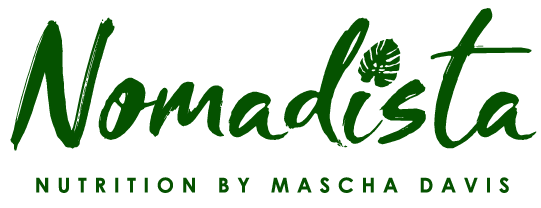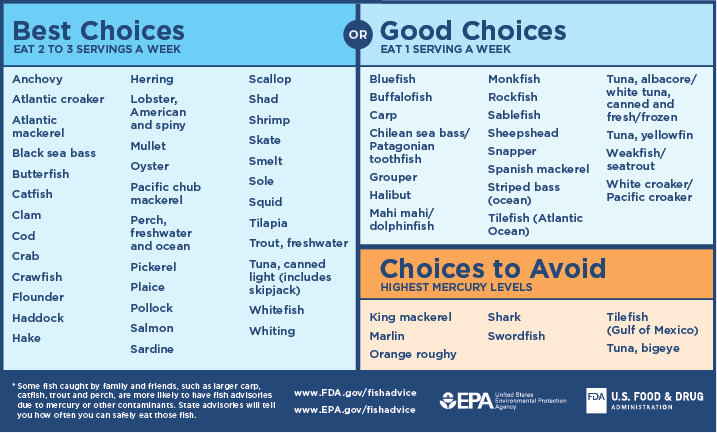I often talk about how eating more fish is beneficial for you, your brain, and your body! But can consuming too much of a good thing become a bad thing?
A main concern people have about fish consumption is mercury. There is a fear that consuming too much mercury can be toxic. While this is actually true, that doesn’t mean you should cross seafood off your list of things to eat for good. In this post we will share the truth behind mercury and seafood consumption, and give you solid recommendations so you can feel safe consuming these foods.
First things first, let’s review: Mercury is a heavy metal that is found in air, water and soil and can exist in three forms. The organic form of mercury is what you have to worry about when consuming seafood. According to the CDC “organic mercury compounds are formed when mercury combines with carbon. Microscopic organisms in water and soil can convert elemental and inorganic mercury into an organic mercury compound, methylmercury, which accumulates in the seafood chain”.
So basically, fish in the water can become contaminated with this form of mercury (methyl-mercury) when it dissolves in water. The mercury then is absorbed into the seafood and as larger fish eat smaller fish, they bioaccumulate even more of this mercury. The potential danger arises when you eat large amounts of contaminated seafood. This can cause damage to the nervous system, which may show up as numbness, memory problems, mood changes and tremors.
Mercury poisoning may also result in feelings of weakness, metallic mouth taste, nausea and/or vomiting, inability to feel hands/face and changes in motor skills, vision, hearing or speech. For pregnant women, it can also pass through the placenta leading to developmental abnormalities for the fetus.
How can you safely consume seafood?
Limit consumption of fish with the highest potential of mercury contamination
In general, the larger the fish, the more likely it is to be contaminated. This is because larger fish live longer and also consume smaller fish, leading to higher rates of contamination.
Instead, eat a variety of low mercury fish and shellfish - see guides below!
Consider choosing sustainable aquaculture. Sustainable aquaculture fish / seafood is often grown in clean spring water and therefore has very low to no mercury.
Below are two comprehensive resources that provide an overview of the safest choices of seafood to consume:
EPA Recommendations
As you can see, there are some differences between these two agencies' recommendations. This is likely because the recommendations are always changing as new evidence comes out about fish from different areas. To read more on how the Seafood Watch Organization develops their recommendations, you can check out the Seafood Watch website.
After cross-referencing the lists, our Top 10 Safest Seafood picks are:
Trout
Oysters
Shrimp
Clams
Crab
Scallops
Tilapia
Cod
Mussels
Salmon (Alaska Wild)
After doing a lot of research on sustainability and mercury, I started Mini Fish, which sources only premium steelhead river trout from one of the cleanest, most sustainable and pristine aquaculture sources in the world. The trout is fully traceable and raised in pure spring water. Mini Fish trout has undetectable mercury levels and contains no microplastics, no PCBs, and no growth hormones or antibiotics.
The main takeaway here is that it is possible to safely consume an abundance of seafood. To help you make the safest and best informed choices, use the guidelines above and check local advisories about the potential risks of the fish depending on where it was caught.




